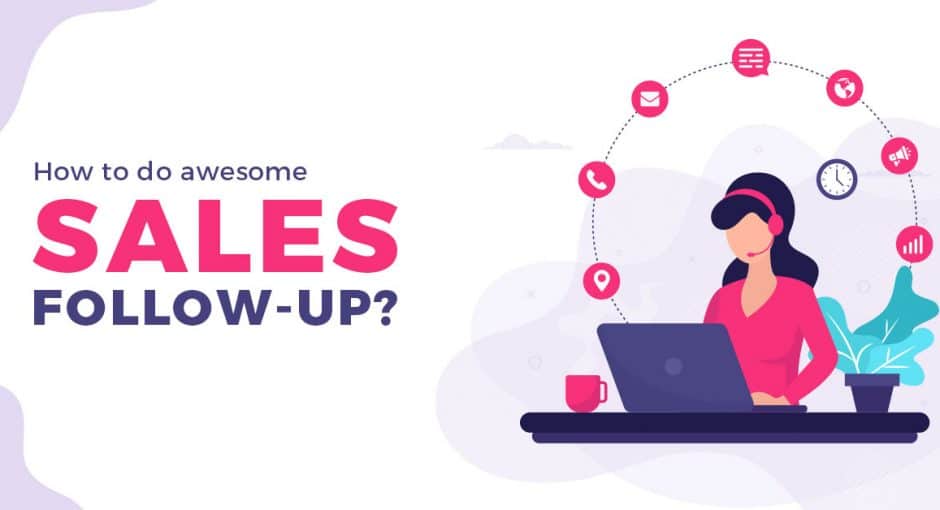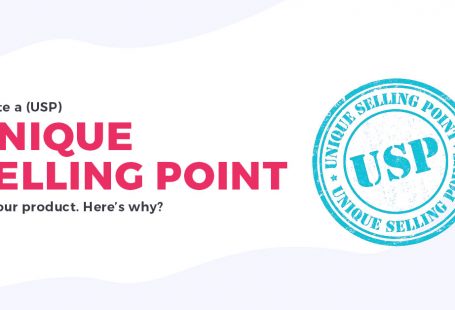As per a study by Marketing Donut, it takes around 5 sales follow ups to close a sales deal. But ironically, almost 50 percent of the salespeople don’t go further than two follow-ups. Maybe they think that a follow-up is enough or maybe they are just not good enough when it comes to persuasion.
But the fact of the matter, most successful salespeople crack the code of follow-ups. Through this write-up we want you to crack this code as well.
Now the important question. Why is there a need for sales follow ups?
There is a barometer for every profession.
Who is a better accountant or who is a better developer? To find answers to such questions, we use respective barometers. The same goes for salespersons.
The one who do follow-ups religiously and has mastered the art, he or she will be called a better salesperson.
Follow-ups are not just about persistence, but response time as well. In how much time you are sending a follow-up email to your leads also matters. It can make or break your deal.
Though on your part you should try to send a follow-up mail within one hour of receiving your lead’s details. Chances of a lead conversion drop by 10% with every hour, generally speaking.
If you postpone it for the next day, more often than not, the lead will go cold.
The role of sales follow ups is to educate your leads
If you instill in your mind that you are an educator, more than a salesperson, you will do better follow-ups.
Your prospects are always looking for answers. “Should I move forward with them or not?”, they are constantly asking this question, not to someone else but to themselves. So you need to cut the clutter for them, by being an educator.
The focus should be on providing knowledge and value to them, and not to sensationalize. You can say something like, “Hey I know it’s a big decision for you to make. It’s your idea, and you want the best journey for it. I am sharing with you an article on the product journey, which might answer some of your queries. But I am more than willing to answer each of them personally as well. Let’s have a call and discuss further.”
In the above example, you are providing value to your lead by sharing the article on a product journey. It goes a long way in striking that connection with your prospects.
So drop that “touch base” approach while doing a follow-up and participate in their decision-making process.
Repetition works like anything for salespeople
Emphasizing on important points is the key to successful persuasion. Your work doesn’t stop at sharing information or your wisdom with your leads. You have to keep emphasizing the potential benefits. And how you do that? By repeating yourself.
You don’t have to rephrase yourself every time you convey the same information. You can repeat it as it is. Of course, you need to be good with your timing. Reiterating how the prospect or lead will benefit from your product or service is important.
Your leads may be receiving so many follow-up emails from so many players, but only a few of those emails will last in their memory bank. It can be you as well if you emphasize enough.
You are allowed to follow templates and scripts. So don’t hesitate using them
You don’t have to do everything from scratch, because if you are, then you are not doing enough smart work.
There are so many templates available on the internet, which you can follow. You can pick up certain elements from them. Templates will help you structure your follow-up mail better. It will help you get the right tonality for your follow-up mail.
You will get an idea on how to write persuasive subject lines as well.
Use different channels
As a salesperson, you need to be media savvy. You can’t just rely on emails for your follow-ups. Your prospects might have different preferences. Some of them might like to have an in-person conversation, or some of them may be comfortable over instant messaging or a skype call.
So as a professional you should be comfortable using all these channels, as you can’t bring in your own preferences. We mean you can, but it’s better you don’t.
The best and the most convenient among the lot is phone calls. You can always drop a voice mail to passively persuade your prospects, without intruding on their personal space. They enjoy a good response rate.
Once you get a positive reply, you can discuss further over a phone call.
Also, you should have a prominent social media presence. Apart from having your accounts on all the popular social network, you can have a blog as well.
You can use your blog to educate prospects on product development, sales, and marketing. All this will reflect well on you.
You should be able to summarize like a pro
This skill applies when you actually end up calling your lead. Once the discussion is over, it’s important for a salesperson to summarize the conversation and highlight the salient points quickly.
It’s a great way to leave that lasting impression on prospects.
You can also send them a mail, just after the call, summarizing the discussion in a few crisp points.
This can establish a lot of clarity between you and your prospect, and can significantly lower the chance of any communication gaps.
Always lay the foundation for the next call
It’s not just about the current call or mail. Within your current call or mail, you need to plug in something that pulls in your prospect for the next call.
You must have your next step figured out before you end your current call. It’s about closing each interaction with a clear-cut plan.
You can set up an appointment for the next call, or schedule an on-site visit, or even schedule a demo.
Hope you liked this write-up and it will help you improve your “sales follow-up” game. Do share your views or anything you would like to add in the comment section.





